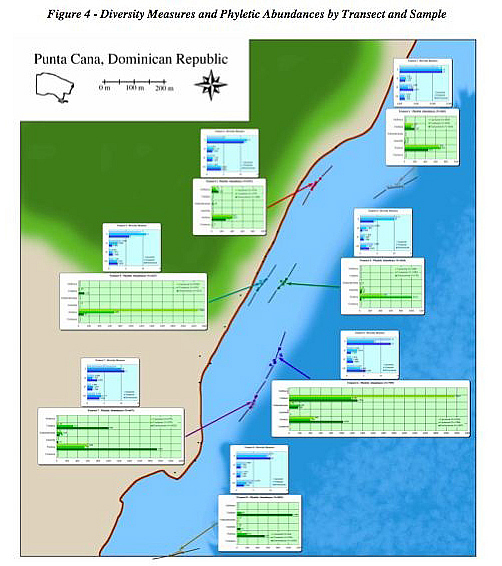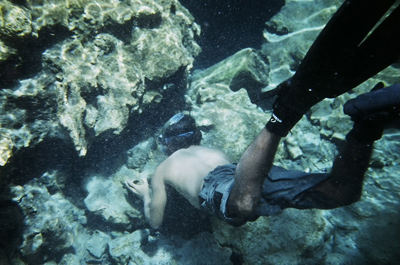
Little work has been done to investigate the effects of artificial reefs in nearshore tropical ecosystems relative to the thousands of artificial reefs that have been placed by resorts and other organizations to rehabilitate degraded reefs and fisheries and promote wildlife viewing. I investigated the impact of small artificial reefs on marine macroinvertebrate community diversity in a shallow backreef lagoon off the coast of Punta Cana, Dominican Republic. Macroinvertebrates were sampled using visual counts of 1 m2 quadrants at 5 m intervals along a linear 150 m transect divided into three contiguous sample conditions: upcurrent control samples, treatment samples containing articifical reefs at 10 m intervals and downcurrent samples. No significant difference in diversity measures or phyletic abundances were found between upcurrent, treatment and downcurrent samples, or between observations made on artificial reefs and observations made nearby (5 m away). No significant effects on diversity measures and phyletic abundance due to abiotic factors, such as depth, temperature, current velocity, turbidity, distance to shore and substrate type, were observed. The only abiotic factor that significantly impacted diversity was substrate type, but only echinoderm abundance showed a difference by increasing with harder substrates. These findings seem to indicate that one year after placement, these artificial reefs have had little effect on macroinvertebrate community diversity in the area. However, observed changes in fish community comparison point to more complicated interactions, and algae presence suggests that artificial reefs are in an early successional stage. Nonsignificant but consistent trends in the data may gain significance over time. Therefore, it is still possible that artificial reefs may effect macroinvertebrate communities over time.
 |
Thesis Figure 4: Diversity measures and phyletic abundances for each transect displayed as they appear within the study area. Transect-to-transect spatial variability is noted but is not clearly explained by environmental variation. Diversity measures are consistent across all transects, but phyletic abundances vary widely. In transects 1 to 4, poriferans are dominant, compared with transects 6 to 8, in which cnidarians are dominant. This is due in part to the superabundance of cnidarians on transect 6, which is adjacent to a live coral field. Among less abundant groups, there were notably more mollusks on transect 2 and echinoderms on transects 6 and 7. |
 |
Samir Patel doing field work in the Artificial reefs, macroinvertebrate community structure and invasion potential in a disturbed backreef lagoon in Punta Cana, Dominican Republic. |
Go to Science Research Projects.
Go to Learning Objectives of Research Project.
Return to E&ESJ home page.
Last updated: 19 January 2006, MKT.